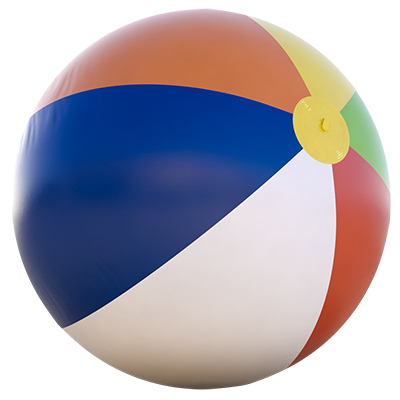When he was in college, Gerald Clarke got a funny reaction from friends when he told them he was majoring in art. “They’d say, ‘What classes are you taking, basket weaving?’ They’d say it as a way to cut me down, but a lot of people just don’t understand the tradition.”
After all, Clarke is a tribal leader in the mountain band of the Cahuilla Band of Indians, who have lived for time immemorial in the Coachella Valley, San Gorgonio Pass, and San Jacinto Mountains—and have created a lot of baskets along the way.
The women who traditionally made the baskets “intimately knew the plant life in our area,” says Clarke. “They knew where the plants for baskets were, when to harvest it, how to treat it. And they created the designs that reflect our spiritual heritage. They were mathematicians, botanists, and philosophers.”
As a result, “for many of the California native tribes, the main art form we are known for is coiled basketry,” Clarke says, “and that’s true up and down the state.”
An Enormous Basket in the Desert
Baskets, however, are just one part of Clarke’s artistic portfolio. “I’m an artist, and a sculptor,” he says, “but I make sculpture inspired by basketry, as a way to honor this beautiful tradition.”
A vivid example is Immersion, a giant installation at Desert X 2023, the biannual public art exhibition in the Greater Palm Springs area. Immersion looks like a huge, coiled basket, but will also remind viewers of a board game. Walk through the installation’s maze-like pathway, all the while picking up game cards and testing your knowledge about Cahuilla heritage and other indigenous cultures (you can see the questions online, too). Questions range from what the Cahuilla dish wiwishis is made of (acorns) to why the 15th Amendment didn’t give Native Americans the right to vote (at that point, the U.S. government didn’t recognize them as citizens).
People find plenty of these facts surprising, says Clarke, “like the fact that the Cahuilla people have no word for nature. It’s because nature is not outside of ourselves—we are part of nature.”
Living and Creating in Two Cultures
Clarke stays connected to nature in part by living on his family’s cattle ranch, located on the reservation in Riverside County. Besides making art and teaching Ethnic Studies at UC Riverside, on any given day “I feed my cows, pigs, and chickens,” he says. “My cows are just below the Cahuilla Casino.”
Clarke was born in nearby Hemet, but after his parents’ divorce he grew up dividing his time between Riverside County and Garden Grove, near Anaheim. He got his bachelor’s degree in Arkansas, his master’s in Texas, then start creating art and teaching at universities in both Texas and Oklahoma—but he always knew he would come back to the ranch one day.
When he did return in the early 2000s, he brought his artistic career with him, and a portfolio that explores his Cahuilla heritage through a multi-media lens: Paintings of native plants, prints made with branding irons, classic Native American–style jewelry rendered from handcuffs, or road signs featuring Cahuilla words and placed on public lands.
His pieces sometimes confuse those taking it in, he says, “because people can have a very traditional, craft-oriented idea of Native American art. Those forms are still alive, but today Native American art is no longer defined by a single theme or kind of materials. When someone on a plane asks what I do for a living, and what my medium is, I say it’s the kitchen sink—anything I can get my hands on.”
Where to See Clarke’s Art
Beyond the limited-time Immersion installation at Desert X, Clarke’s pieces can also be seen at museums such as the Palm Springs Art Museum, the Autry Museum of the American West, and the San Diego Museum of Art, as well as the Agua Caliente Cultural Museum, scheduled to open in Palm Springs in 2023.
Over the years, he says, many museums haven’t always been open to new forms of Native art. “It’s been backward-looking, and they’ve treated native people more like objects of history, not part of contemporary work. But it’s starting to turn—just within the past 20 years, they’ve started to re-examine how they treat the artists.”
It’s not just the art world, either, that is taking a different look. “I think society is re-evaluating how they’ve treated Native American people,” Clarke says. “A lot of people are doing land acknowledgements, which can be a little bit performative—thank you for acknowledging you took it from us—but that’s a start. I think there is a hunger among Americans to have the real history.”
Through his career, he says, he’s thought a lot about the fine line between creating art for his own community, and creating art geared toward educating the larger community. “The hardest thing for Native American artists is to show your work in a professional setting where other Native Americans can also see it. We know the Native American people were extracted from the land but even today the art world tries to extract our artists from our communities. You can make it big in Santa Fe, New York, or Paris, but then you’re not in your community, so I’ve resisted that. When the Desert X opportunity came up, I jumped on it.”
That’s another reason why he loves staying on his family ranch—though he says life on the reservation has changed a lot since he was a kid. “Used to be, we felt isolated out there on the reservation, growing up. Now you have cell service, broadband, satellite TV, and it’s much more connected. And let’s face it, the beauty of living in California is that in an hour you can be at the beach, the desert, or the mountains. There’s no other place like it.”



